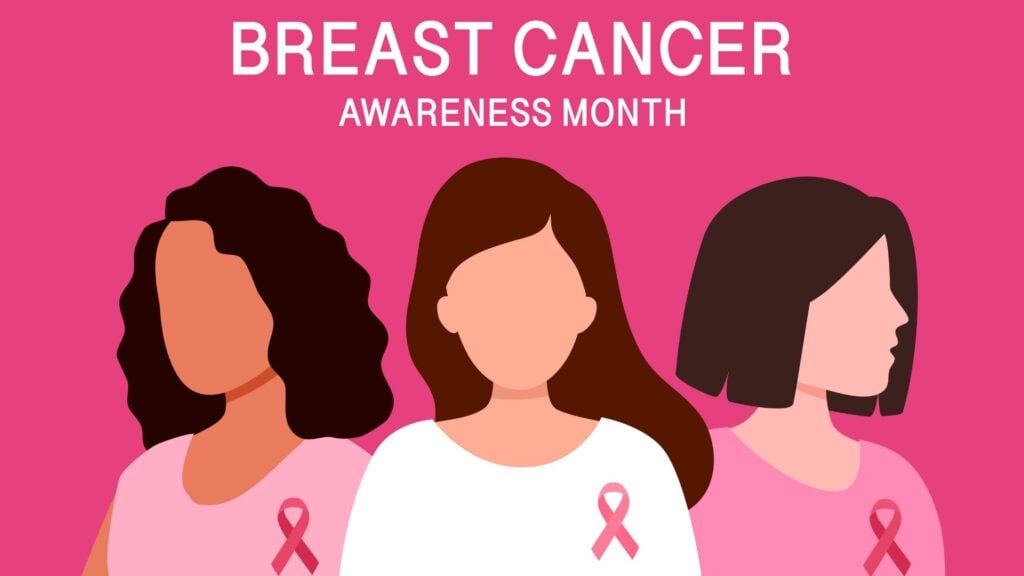World Pharmacist Day 2025: A Focus on Global Health & Pharmaceutical
Join us in celebrating World Pharmacists Day 2025 and the contributions of pharmacists in t...
SCAB Pharmacy

Every October, the world turns pink to raise awareness about breast cancer, a disease that affects millions globally. This Breast Cancer Awareness Month serves as a critical reminder of the importance of early detection, the power of support, and the ongoing need for research and advocacy. Throughout this article, we aim to provide valuable information about breast cancer, from understanding the risk factors and common signs to exploring treatment options and resources available for patients and survivors. Join us as we delve into the significance of this month and how you can contribute to the fight against breast cancer.
Breast Cancer Awareness Month, an international health campaign held every October, is dedicated to promoting breast cancer screening and working to reduce the risk of the disease. Breast cancer develops when cells in the breast grow uncontrollably, ultimately forming a tumor. This tumor can then invade nearby tissues or metastasize to other parts of the body. There are two main types of breast cancer: ductal carcinoma, which starts in the milk ducts, and lobular carcinoma, which originates in the milk-producing glands, or lobules. Understanding the overview of breast cancer is the first step in empowering individuals with the information they need to take proactive steps for their breast health and increase breast cancer awareness.
Several risk factors can increase a person’s chance of developing breast cancer. Lifestyle choices and genetic predispositions can all contribute to the potential development of breast cancer. Other risk factors are presented in the table below:
| Category | Risk Factors |
|---|---|
| Age & Hormones | Increasing age (most diagnoses after 50), early menstruation (before age 12), late menopause (after age 55), long-term use of hormone replacement therapy |
| Genetics & Family History | Family history of breast cancer, inherited genetic mutations (BRCA1 and BRCA2 genes) |
Other risk factors include: certain non-cancerous breast conditions, having dense breast tissue, obesity, lack of physical activity, alcohol consumption, and transfeminine people taking gender-affirming hormone therapy.
Recognizing the common signs and symptoms of breast cancer is crucial for early detection. Being aware of potential symptoms and promptly seeking medical attention can significantly improve the chances of successful treatment and survival, especially when considering options like radiation therapy. Some common signs are described in the table below:
| Area Affected by breast cancer can have significant implications for community health initiatives. | Possible Symptoms |
|---|---|
| Breast | A lump or thickening, changes in size, shape, or appearance, dimpling, puckering, or redness of the skin, pain. |
| Nipple | Nipple discharge, inversion, or any changes in its appearance. |
| Underarm | Lump or thickening. |
Early detection is paramount in the fight against breast cancer, and adhering to recommended screening guidelines can significantly improve outcomes. Mammograms are a crucial screening tool, utilizing low-dose X-rays to detect tumors and abnormalities in the breast, often before they can be felt. The American Cancer Society provides the following recommendations for mammogram frequency:
| Age Group | Mammogram Frequency is crucial for early detection, which can lead to less aggressive treatments such as lumpectomy instead of mastectomy. |
|---|---|
| 45 to 54 | Every year |
| 55 and older | Every other year or every year |
Women aged 40 to 44 should have the option to start yearly breast cancer screening with mammograms if they wish to do so. It’s important to talk with your doctor about what is best for you.
In addition to mammograms, performing regular breast self-exams and clinical breast exams are important components of breast health awareness. A breast self-exam involves becoming familiar with the normal look and feel of your breasts, enabling you to detect any changes or abnormalities promptly. During a clinical breast exam, a healthcare professional will physically examine your breasts for lumps or other signs of breast cancer. These exams, in conjunction with mammograms, provide a comprehensive approach to early breast cancer detection. The steps to perform a self-exam are: 1. Stand in front of a mirror with your hands on your hips. 2. Raise your arms and look for any dimpling. 3. Lie down and use your fingertips to feel your breasts. 4. Gently squeeze each nipple to check for any discharge.
Genetic testing, particularly for BRCA1 and BRCA2 gene mutations, plays a crucial role in assessing breast cancer risk. These genes are tumor suppressor genes, and mutations can increase the likelihood of developing breast cancer. Genetic testing is typically recommended for individuals with a family history of breast cancer, ovarian cancer, or other related cancers. Understanding your genetic risk can inform decisions about prevention strategies, such as increased screening frequency, prophylactic surgery, or participation in clinical trials. If a BRCA mutation is correctly identified, one can plan for proactive and correct preventive steps. Genetic testing is a powerful tool in personalized breast cancer care, particularly for those with ER-positive tumors.
The message is clear: Early detection saves lives, especially in oncology, where timely intervention can lead to better outcomes.. When breast cancer is detected early, the chances of successful treatment and survival are significantly higher. Early detection allows for more treatment options, including less aggressive approaches like lumpectomy and hormone therapy, which may be preferable to mastectomy. Early-stage breast cancer is often more responsive to treatment, leading to better outcomes and improved quality of life for patients. Early detection also helps to reduce the likelihood of metastasis, where cancer spreads to other parts of the body, making treatment more challenging. Early breast cancer screening through mammograms and self-exams can change a patient’s life for the better.
Breast Cancer Awareness Month, taking place every October, also focuses on providing support for patients and survivors. The emotional toll of a breast cancer diagnosis can be immense, and access to counseling and support groups is crucial. These resources provide a safe space for patients and survivors to share their experiences, connect with others facing similar challenges, and receive emotional support. Many cancer centers and local organizations offer support groups led by trained professionals. Furthermore, online forums and communities can provide additional avenues for emotional support, ensuring that patients and survivors feel connected and understood throughout their breast cancer journey. Emotional support resources help patients with their mental recovery. These centers can help to raise awareness and improve breast cancer patient care.
Survivorship programs are designed to support individuals after they have completed breast cancer treatment. These programs address the physical, emotional, and practical challenges that survivors may face during their recovery. Services may include rehabilitation programs, nutritional counseling, stress management techniques, and support groups. Survivorship programs aim to improve the quality of life for breast cancer survivors and help them navigate the long-term effects of treatment. Understanding the importance of survivorship care ensures that breast cancer survivors receive the comprehensive support they need to thrive after diagnosis. Finding a support program near you can improve the survival rates of local breast cancer patients, particularly those undergoing chemotherapy.
You can participate in Breast Cancer Awareness Month to raise awareness by wearing pink or pink ribbons to show support, organize or join awareness campaigns and charity walks, and create and share posters or social media messages to further support. Attend educational events and seminars to stay informed. Donate to breast cancer research organizations to support research efforts. Support survivor stories and patient support groups can also help raise cancer awareness. By actively participating in Breast Cancer Awareness Month, you can make a meaningful difference in the lives of those affected by breast cancer. If you are searching for how to get involved, look for information in your community or cancer awareness advocacy group.
Embracing healthy lifestyle changes can significantly contribute to breast cancer prevention. The National Breast Cancer Foundation emphasizes the importance of a balanced diet rich in fruits, vegetables, and whole grains, while minimizing processed foods. Regular exercise for at least 30 minutes daily is also crucial for maintaining a healthy weight and reducing breast cancer risk. Limiting alcohol consumption and refraining from smoking are vital, as both habits elevate the risk of developing the disease.
Adopting these lifestyle choices can promote overall well-being and bolster breast health, aligning with the goals of Breast Cancer Awareness Month.
Maintaining a healthy weight through a balanced diet and regular exercise is another tip to reduce your cancer risk.
Several preventative measures can further enhance breast health. Regular check-ups with a healthcare professional are particularly important, especially for women with a family history of breast cancer. Managing stress is also vital, as chronic stress can negatively impact the immune system and overall health. Limiting or avoiding hormone replacement therapy is another recommendation. Breastfeeding, if possible, may lower the risk of breast cancer. The American Cancer Society supports the idea of limiting hormone replacement therapy and supports the need for regular check ups. Taking proactive steps and incorporating these preventative measures can contribute to reducing breast cancer risk and promote breast health awareness, especially for those who have a parent with this cancer.

Adopting a “pink ribbon lifestyle” signifies a commitment to breast cancer awareness and proactive breast health. This encompasses embracing preventive measures, supporting research and advocacy efforts, and fostering a culture of open communication about breast health. It also involves encouraging others to get screened and providing support to those affected by the disease, including information on biopsy procedures. By integrating these values into daily life, individuals can contribute to reducing the impact of breast cancer and promoting better outcomes for all. This proactive lifestyle will also raise awareness, especially during Breast Cancer Awareness Month in the month of October, when everyone is wearing a pink ribbon to promote breast cancer screening and awareness about the implications of different treatment options like radiation and chemotherapy.
Breast Cancer Awareness Month offers numerous fundraising events and opportunities to support breast cancer research, screening, and patient care. Participating in walks, runs, or galas can raise awareness and generate vital funds. Donations made during this month directly support efforts to develop new treatments, provide breast cancer screening in underserved communities, and offer support to survivors of chemotherapy. By contributing to fundraising initiatives, individuals can make a tangible difference in the fight against breast cancer. These events help to raise awareness for early detection and increase breast cancer screening and research opportunities and help cancer patients and survivors with care.
Volunteering and advocacy are integral components of Breast Cancer Awareness Month. Individuals can volunteer their time and skills to support local breast cancer organizations, participate in awareness events, or assist with patient support programs. Advocacy involves raising your voice to promote policies that support breast cancer research, screening, and access to care. By volunteering and advocating, individuals can amplify the impact of Breast Cancer Awareness Month and contribute to positive change. Many local cancer centers offer volunteer opportunities for breast cancer awareness month, which is hosted every October, including support for patients undergoing chemotherapy.

Spreading awareness within your community is a powerful way to support Breast Cancer Awareness Month. Organize workshops and health camps to educate people about breast cancer screening and prevention. Share personal stories of overcoming challenges to inspire and motivate others. Utilize social media to disseminate information and raise awareness. Encourage open conversations about breast health and support those affected by the disease. By actively engaging in community outreach, individuals can amplify the message of Breast Cancer Awareness Month and promote early detection and support for all. Spreading awareness can be done through clinical campaigns and other programs to encourage breast cancer screening and to perform breast self-exams, which will promote early detection.
Join us in celebrating World Pharmacists Day 2025 and the contributions of pharmacists in t...
SCAB Pharmacy

Malnutrition is a pervasive global health issue, impacting millions, particularly young chi...
SCAB Pharmacy

Welcome to a comprehensive guide on folic acid and folate, two crucial B vitamins that play...
SCAB Pharmacy

Do you have any questions? Do not hesitate to contact us.